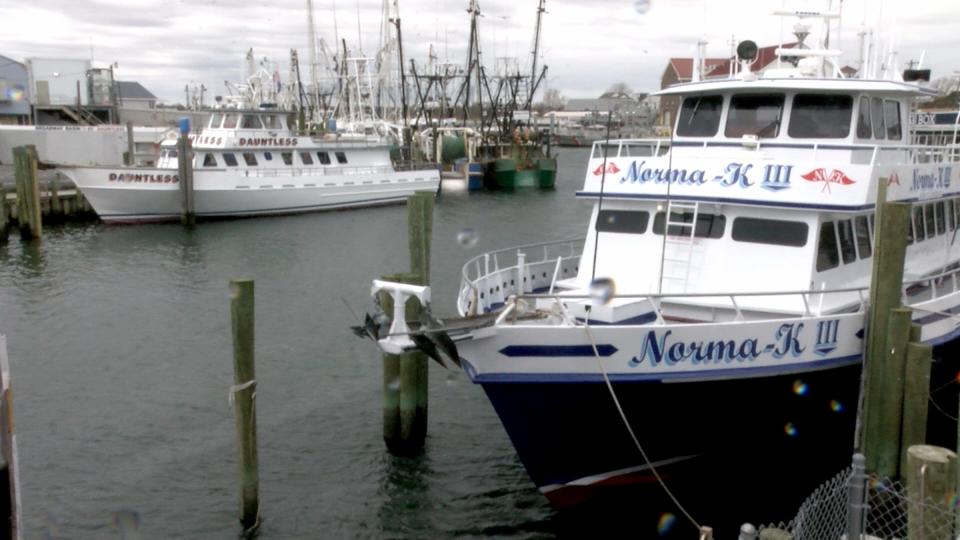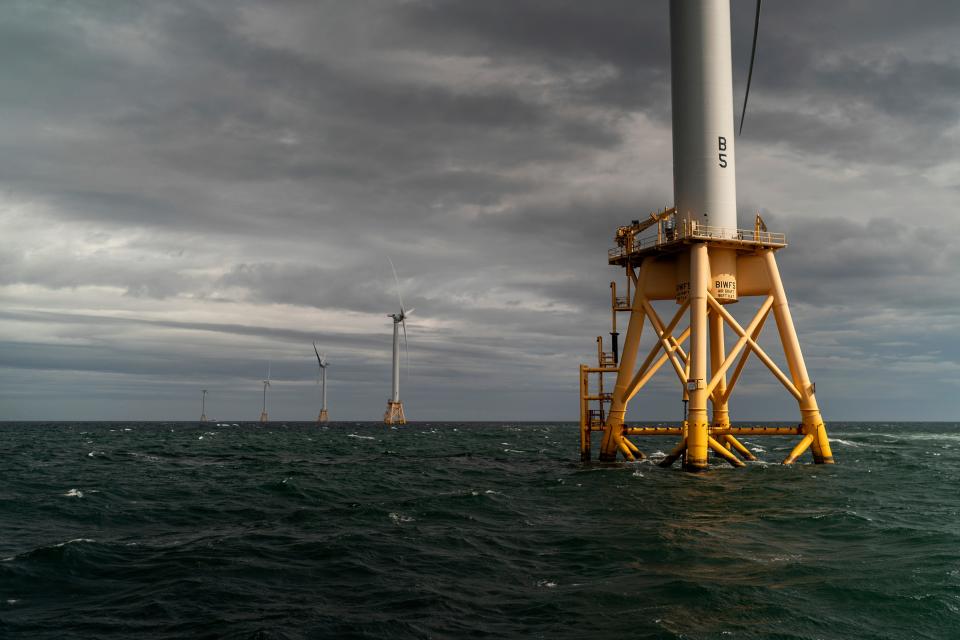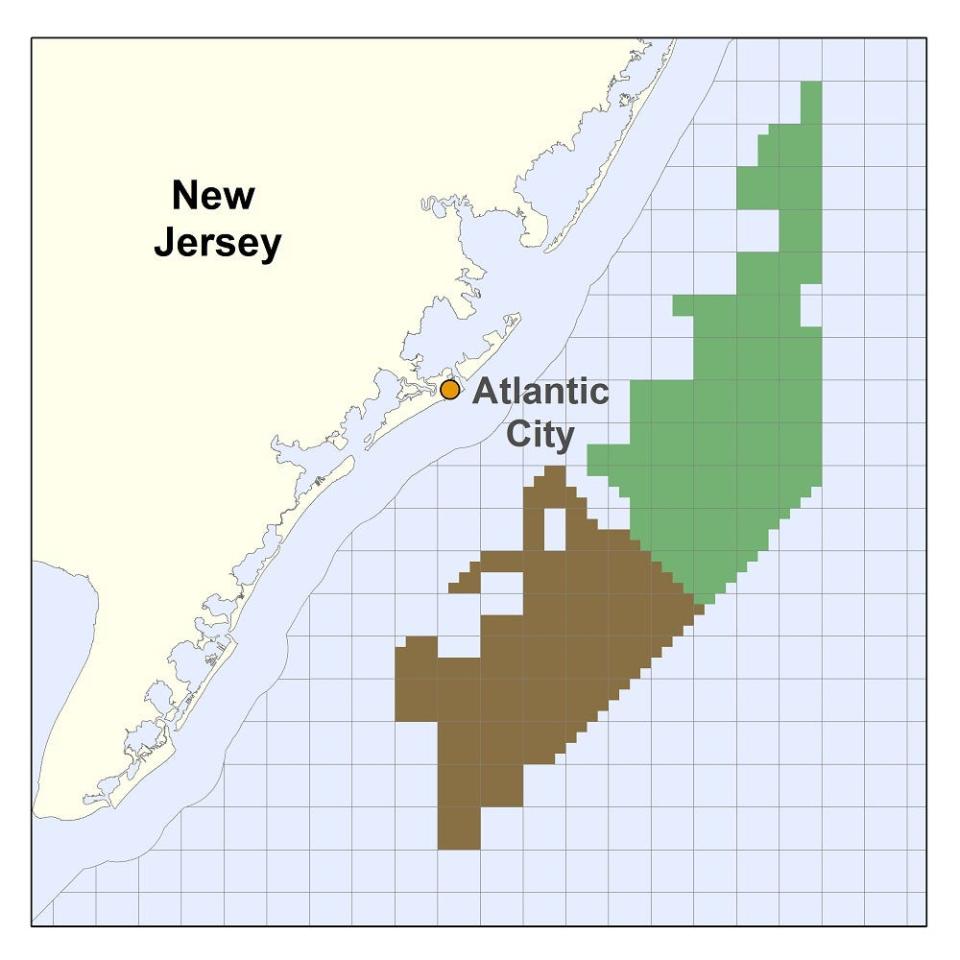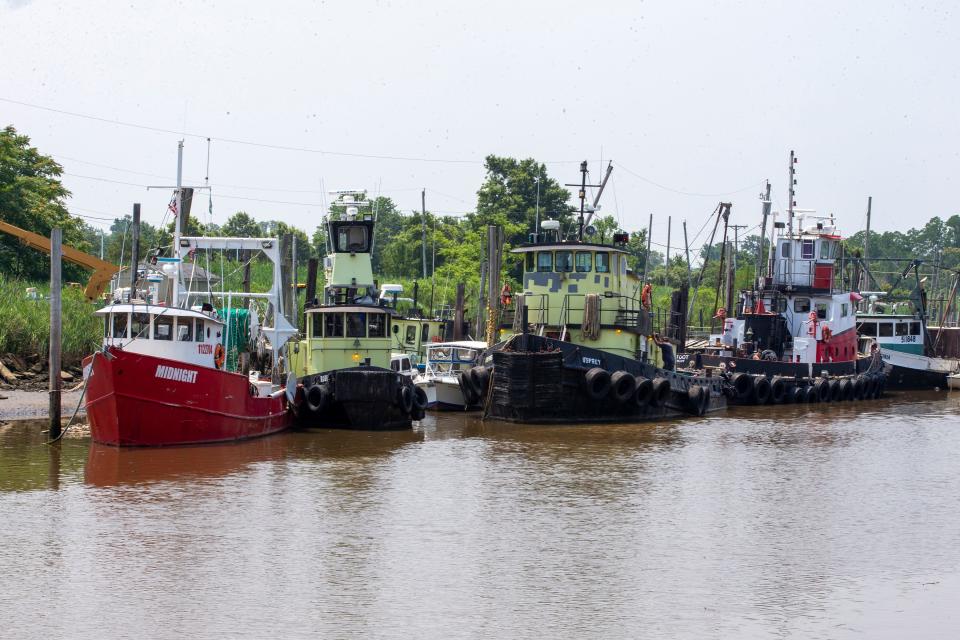Offshore wind farms threaten New Jersey's shellfish industry. Should fishing communities be compensated?
Scallops and clams are likely to get more expensive to harvest off New Jersey, as commercial fishing vessels will soon have to compete for ocean space against offshore wind energy companies.
Earlier this month, New Jersey announced it would join eight other states that are seeking a regional approach to compensate fishing communities for the impending losses.
"Are we going to be allowed to fish inside of them (the wind turbine fields)?" asked Kirk O. Larson, a scallop fleet owner and mayor of Barnegat Light, New Jersey. "Why did (the federal Bureau of Ocean Energy Management) put a wind farm right inside of a scallop area, the most productive scallop area pretty much on the East Coast, not counting Georges Bank (a shallow area of ocean off Cape Cod)."

Shellfish harvesters like Larson are expected face serious financial damage from offshore wind development projects. Overall, revenues are expected to decline between 3% and 15% for shellfish harvesters across the Northeast and mid-Atlantic, according to two Rutgers University studies released earlier this year. New Jersey could face some of the steepest revenue losses. For example, surf clam harvest losses could be as high as 25% for Atlantic City-based vessels, according to the Rutgers researchers.
In 2019, some 17.6 million pounds of surf clams — which are often used in chowders, soups and stews — were harvested off New Jersey, according to the National Oceanic and Atmospheric Administration. That season, clams sold for an average price of $2.88 per pound, according to the agency.
But once wind farms are erected across thousands of acres of ocean, some commercial fishing boats are in danger. Vessels that trawl for fish risk having their gear tangle around the wind turbines or their bases. Scallopers or clammers could accidentally snag a buried power cable. As a result, many will have to travel farther, and at greater cost for fuel and workers, to stay in business.

A compensation deal "is really is an opportunity for the fishermen and the offshore wind developers to hopefully enter into a new phase of coexistence, where there's proper accounting for harm to fishermen, and the ability for developers to be able to build their projects," said Kris Ohleth, the executive director for the Special Initiative on Offshore Wind, an independent organization that provides guidance and expertise focused on the sustainable and responsible construction of offshore wind projects.
"I think this program is one of the most substantial steps taken towards coexistence since the beginning of offshore wind pursuits in the United States. So it's really a pivotal moment," she said.
The compensation fund would be regional across the mid-Atlantic and New England, primarily because boats from different states could be impacted by the same offshore wind farms.
Off New Jersey's southern coast, stretching from Cape May to Long Beach Island, are two lease areas that span over nearly 344,000 acres.
Once complete, New Jersey offshore wind projects aim to supply enough power to electrify up to 1.7 million of New Jersey's nearly 3.8 million homes. The effort is a major part of Gov. Phil Murphy's agenda to reduce fossil fuel consumption in the state and reduce carbon emissions, which scientists say are leading drivers of climate change and sea level rise.
To the north and east, another seven lease areas are under development to bring carbon-free energy to New York: Empire Wind and the New York Bight. Those lease areas total 567,551 acres under consideration for wind turbine development. The western edge of Empire Wind is about 19.5 miles east of Long Branch, according to the federal Bureau of Ocean Energy Management.

Larson wants to see the offshore wind farms moved out of the lucrative fishing and scalloping areas.
"I'm not looking for compensation," said the scallop fleet owner. "I'm looking for work, so I'm not really looking for welfare."
Others in the fishing community see the wind turbines as a boon. Capt. Tom Ferrera of the T-wrecks Charters in Atlantic City says he expects the turbines to create new fish habitat: shade for fish near the surface as well as structures that benefit bottom-dwellers.
The turbines are "going to create tons of structure and food… that'll lead to bigger fish," he said. "They (wind developers) are going to put 100 of them (turbines) out there, at minimum, at Atlantic City. It's going to make 100 fishing areas from the surface down to the bottom, which are going to be great."
Capt. Paul Eidman, who runs charters in the waters off Monmouth County, like Ferrera said many types of commercial and recreational fishing companies will benefit from the wind turbines. Eidman said numerous fish species will benefit from the break in the current caused by the turbine supports.

"Fish that other fish feed upon will take shelter in that current break. (That will attract) everything from tuna down to black sea bass on the bottom. You'll be spanning that whole range, depending on the time of year," he said.
In the absence of moving the wind lease areas to different locations and reopening discussions over where to site the projects, Scot Mackey, the executive director of The Garden State Seafood Association, said a regional compensation approach may be the best compromise going forward.
"The government has created this problem," he said. "They developed a system whereby they proposed leases without thinking about the impacts and totally analyzing impacts."
Questions remain on how far compensation will extend, and whether seafood processors and related industries dependent on seafood fisheries will also be compensated for higher prices or losses, Mackey said.
"It spans big time from just the docks," he said. "There's a whole host of other operations shoreside, the docks themselves and the processors that handle the product when it comes back in."
Those issues are yet to be worked out, Mackey said.
Amanda Oglesby is an Ocean County native who covers Brick, Barnegat and Lacey townships as well as the environment. She has worked for the Press for more than a decade. Reach her at @OglesbyAPP, aoglesby@gannettnj.com or 732-557-5701.
This article originally appeared on USA TODAY: Offshore wind farms threaten New Jersey's shellfish industry

